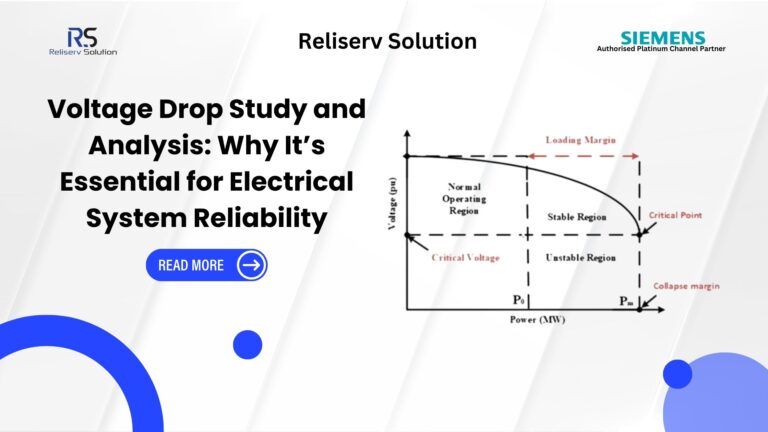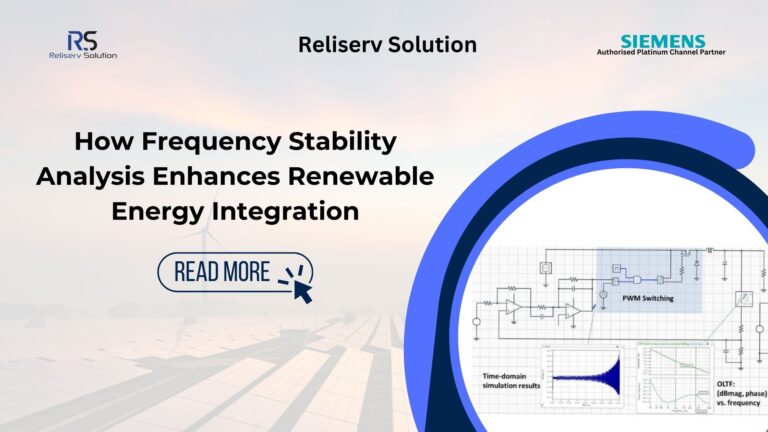In today’s energy-intensive world, maintaining efficient power systems is crucial. Harmonics Study and Analysis plays a significant role in ensuring optimal energy efficiency and minimizing power loss. By identifying and mitigating harmonic distortions, facilities can enhance power quality, prevent equipment failures, and reduce operational costs.
Overview Of Harmonics Study and Analysis in Power Systems
Harmonics Study and Analysis is a crucial process for maintaining efficient power systems and minimizing energy loss. By identifying and mitigating harmonic distortions, businesses can enhance power quality, prevent equipment malfunctions, and reduce operational costs.
Harmonics are voltage or current waveforms deviating from the fundamental frequency, commonly caused by non-linear loads like variable frequency drives (VFDs), uninterruptible power supplies (UPS), and LED lighting. These distortions can lead to increased power loss, overheating, and equipment failure.
Conducting a Harmonics Study and Analysis helps diagnose power quality issues, ensuring equipment longevity and minimizing costly downtime. Facilities that experience frequent electrical malfunctions, plan to add non-linear loads, or undergo system expansions particularly benefit from harmonic analysis.
Key advantages of harmonic analysis include improved problem diagnosis, preventive maintenance, extended equipment lifespan, energy cost savings, and compliance with IEEE 519 and other industry standards. Through simulations and modeling using specialized software like ETAP, harmonic analysis identifies distortion sources and proposes effective mitigation solutions.
Harmonics are voltage or current waveforms that deviate from the fundamental frequency, typically 50 or 60 Hz. These deviations create power quality issues, leading to inefficient energy use and equipment malfunctions. Non-linear loads such as variable frequency drives (VFDs), uninterruptible power supplies (UPS), and LED lighting are common sources of harmonics.
Why Harmonics Study and Analysis Matters
Conducting a harmonic analysis is essential for identifying the root cause of power quality issues. Harmonic distortions can lead to various problems, including:
- Increased Power Loss: Harmonics result in higher losses in transformers, motors, and cables, reducing overall system efficiency.
- Equipment Malfunctions: Sensitive devices may fail or operate erratically under distorted voltage conditions.
- Excessive Heating: Transformers and motors experience overheating, which accelerates insulation degradation and shortens lifespan.
- Resonance Issues: When harmonics coincide with system resonances, voltage amplification can occur, leading to equipment damage.
Benefits of Harmonics Study and Analysis for Energy Efficiency
Performing a harmonic analysis offers numerous advantages in enhancing energy efficiency and reducing power loss:
- Accurate Problem Diagnosis: By pinpointing the sources of harmonics, facilities can take targeted corrective actions.
- Preventive Maintenance: Early detection of harmonic distortions helps prevent unexpected equipment failures and costly downtime.
- Improved Equipment Lifespan: Reducing harmonics minimizes overheating and wear, extending the operational life of motors, transformers, and other machinery.
- Energy Cost Savings: Lower power loss translates to reduced energy consumption and lower electricity bills.
- Compliance with Standards: Maintaining harmonics within acceptable limits ensures compliance with IEEE 519 and other power quality standards.
When to Perform a Harmonic Analysis
The Harmonics Study and Analysis becomes necessary under the following conditions:
- During the design phase when non-linear loads exceed 25% of the total load.
- When electrical equipment experiences frequent malfunctions or failures.
- After adding new non-linear loads or capacitor banks.
- When planning system expansions or modifications.
- As part of a preventive maintenance program to ensure long-term reliability.
How Harmonic Analysis is Conducted
Performing a harmonic analysis typically involves the following steps:
- Data Collection: Gather electrical system data, including one-line diagrams, load profiles, and equipment specifications.
- Identify Non-Linear Loads: Highlight sources of harmonic generation, such as VFDs, UPS systems, and rectifiers.
- Simulation and Modeling: Use specialized software like ETAP to simulate the system under various scenarios.
- Frequency Spectrum Analysis: Analyze voltage and current waveforms to determine the harmonic frequency components.
- Evaluate Harmonic Distortion Levels: Compare results with IEEE 519 standards to assess compliance.
- Propose Mitigation Solutions: Recommend appropriate measures like harmonic filters, phase-shifting transformers, or higher pulse-number rectifiers.
Mitigating Harmonic Distortions
When harmonic levels exceed acceptable limits, implementing effective mitigation techniques is essential to restore power quality and prevent equipment damage. Several proven methods are available to minimize harmonic distortions:
- Passive Harmonic Filters: These devices target and absorb specific harmonic frequencies, effectively reducing distortion and improving system stability.
- Active Harmonic Filters: Continuously monitoring and dynamically correcting harmonic distortions, active filters are ideal for systems with fluctuating loads.
- Multi-Pulse Converters: Utilizing 12-pulse or 18-pulse rectifiers, these converters significantly reduce harmonic generation by balancing phase currents and minimizing harmonic emissions.
- Phase-Shifting Transformers: By altering phase angles, these transformers reduce harmonic currents, mitigating their impact on the system.
- Capacitor Bank Adjustments: Properly relocating or resizing capacitor banks prevents resonance issues, minimizing the risk of harmonic amplification.
Implementing one or a combination of these solutions can effectively restore power quality, ensure compliance with IEEE 519 standards, and optimize system efficiency. A tailored approach based on a comprehensive harmonic analysis will yield the best results for maintaining stable and reliable operations.
Real-World Impact of Harmonic Analysis
Consider an industrial facility that experienced frequent equipment failures and unexpected downtime. After conducting a harmonic analysis, engineers identified a significant presence of fifth and seventh harmonics. By installing active harmonic filters and optimizing the load distribution, the facility achieved the following results:
- 25% Reduction in Power Loss: Lower harmonic levels minimized energy waste.
- Increased Equipment Lifespan: Reduced overheating and stress on components.
- Improved Power Factor: Enhanced system efficiency and reduced electricity costs.
Conclusion
Harmonics Study and Analysis is a powerful tool for improving energy efficiency and reducing power loss in electrical systems. By identifying and mitigating harmonic distortions, facilities can enhance power quality, extend equipment lifespan, and achieve significant cost savings. With expert analysis and tailored solutions, businesses can ensure a stable and reliable power supply, supporting sustainable operations.
If you’re facing power quality issues or planning a system upgrade, consider conducting a harmonic analysis to optimize your energy efficiency. Reach out to our experienced team for comprehensive harmonic study services using ETAP software and ensure your system operates at peak performance.
With its headquarters in Mumbai, Maharashtra, Reliserv Solution is both a Siemens Authorized supplier and a Platinum Channel Partner. A variety of our specialized services and solutions are also available to the panel building industry and other industries. If you have any queries or require assistance, please contact us for Harmonics Study and Analysis Cost by phone at +917506112097 or by email at [email protected]. Click this link to see our list of all the Field Services we offer. Over the years, we have been a Harmonics Study and Analysis Provider of a wide range of additional services in addition to the well-known Voltage Drop Study and Analysis.



